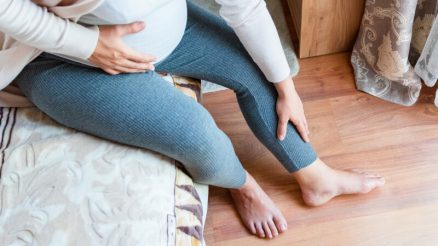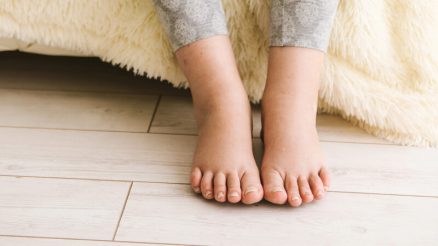Ah, foot peel masks. If you’ve scrolled through social media or wandered down the beauty aisle recently, you’ve likely come across these intriguing, sometimes-gross-but-always-fascinating products. They promise to shed layers of dead, rough skin, revealing baby-soft feet underneath. But beyond the viral videos of shedding skin, do foot peel masks really work? Let’s take a deep dive into this popular beauty trend.
What Exactly Are Foot Peel Masks?
At their core, foot peel masks are essentially chemical exfoliants designed specifically for your feet. They typically come in the form of plastic booties lined with a gel-like solution. This solution contains a potent blend of alpha-hydroxy acids (AHAs) like glycolic acid, lactic acid, and malic acid, along with salicylic acid (a beta-hydroxy acid, or BHA). Some formulations also include natural extracts like fruit acids, glycerin, and other moisturizing agents to prevent excessive dryness.
The idea is simple: you wear the booties for a specified period, allow the acids to penetrate and break down the bonds between dead skin cells, and then, over the next few days to a week, the magic (or rather, the peeling) begins.
How Do They Work Their “Magic”?
The primary mechanism behind foot peel masks is chemical exfoliation. Here’s a breakdown:
- Acidic Breakdown: When you wear the booties, the acidic solution is in direct contact with your skin. AHAs and BHAs work by dissolving the “glue” (desmosomes) that holds dead skin cells together. This allows the hardened, calloused skin to separate from the healthier, newer skin underneath.
- Penetration: Unlike a physical scrub that works on the surface, these acids penetrate deeper into the stratum corneum (the outermost layer of your skin) to target layers of dead skin that have built up over time.
- Delayed Reaction: This isn’t an instant gratification product. The peeling process doesn’t start immediately after you remove the booties. It usually takes anywhere from 3 to 7 days for the visible shedding to begin. This delay is due to the time it takes for the loosened skin cells to fully detach and for your body’s natural shedding process to kick in.
- Natural Renewal: As the dead skin peels away, it encourages your feet to produce new, softer skin cells, leading to a smoother texture.
So, Do They Really Work? The Verdict.
In short: Yes, for many people, foot peel masks absolutely work.
You’ll find countless before-and-after photos and testimonials online showcasing dramatic results – thick, flaky skin giving way to visibly softer, smoother feet. They are particularly effective for addressing:
- Dry, cracked heels: The acids can soften and help remove the tough, often painful skin on heels.
- Calluses: While not a cure for severe, deep calluses that require professional attention, they can significantly reduce the thickness and roughness of moderate calluses.
- General roughness: If your feet feel perpetually dry and rough, a foot peel mask can provide a deep exfoliation that traditional lotions or pumice stones might not achieve.
However, it’s important to manage expectations and understand that results can vary.
- Severity of Dryness: The more dead skin you have, the more dramatic the peel might appear. If your feet are already relatively soft, you might experience a less intense peel or minimal shedding.
- Individual Skin Type: Everyone’s skin reacts differently. Some people might experience a very thorough peel, while others might have more patchy or subtle results.
- Maintenance: A foot peel mask is not a permanent solution. Your feet will inevitably build up dead skin again, especially with regular walking and friction. Most people find they need to use them every 1-3 months for maintenance.
Potential Side Effects and Considerations
While generally safe, foot peel masks aren’t without potential side effects or situations where they should be avoided:
- Excessive Peeling/Irritation: Some people might experience more peeling than anticipated, or their skin might feel tender and irritated.
- Redness and Sensitivity: The acids can cause temporary redness or increased sensitivity, especially right after the initial peel.
- Uneven Peel: The peeling might not be perfectly even, leading to some areas peeling more than others.
- Not for Everyone:
- Diabetics: Individuals with diabetes should avoid foot peel masks due to the risk of infection and compromised healing.
- Sensitive Skin/Skin Conditions: If you have extremely sensitive skin, eczema, psoriasis, or any open wounds, cuts, or active infections on your feet, do not use these masks.
- Pregnancy/Breastfeeding: Consult your doctor before use, as some ingredients might not be recommended.
- Sunburn: Avoid using on sunburned feet.
Tips for a Successful Foot Peel Mask Experience
If you decide to try a foot peel mask, here are some tips to maximize your results and minimize potential issues:
- Patch Test: If you have sensitive skin, cut a small piece of the mask and apply it to a discreet area of your foot (e.g., the top) for a shorter duration to check for any adverse reactions.
- Soak Your Feet Beforehand: Many instructions recommend soaking your feet in warm water for 20-30 minutes before applying the mask. This can help soften the skin and allow the acids to penetrate more effectively.
- Follow Instructions Precisely: Adhere to the recommended wearing time. Leaving the mask on for longer than instructed will not necessarily lead to a better peel and could increase the risk of irritation.
- Be Patient: The peeling process takes time. Don’t pick or pull at the skin, as this can cause irritation or damage. Let the skin shed naturally.
- Soak Your Feet Daily (After Initial Application): Once the peeling starts (or even a few days after the initial application), soaking your feet in warm water for 15-20 minutes daily can help expedite the shedding process.
- Moisturize (After Peeling Completes): Once the active peeling phase is over and the new skin is revealed, moisturize regularly to maintain softness.
- Wear Socks: To manage the peeling and keep shedding skin contained, wear socks during the peeling phase.
- Avoid Immediate Sun Exposure: Your newly exposed skin will be more sensitive to the sun. Wear socks or apply sunscreen if your feet will be exposed.
- Don’t Overdo It: Wait at least 4-6 weeks (or even longer) between treatments to give your skin ample time to recover and regenerate.
The Bottom Line
Foot peel masks can be a highly effective and satisfying way to achieve remarkably soft, smooth feet, especially if you struggle with persistent dryness and calluses. While the peeling phase can be a bit… unglamorous, the results for many are well worth it. Just remember to use them cautiously, follow the instructions, and prioritize your foot health. If in doubt, always consult with a dermatologist or podiatrist.
Happy peeling!








